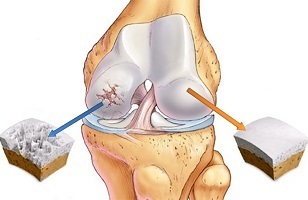
Osteoarthritis of the knee joint is one of the most common joint diseases and is in second place in terms of severity after coxarthrosis.
According to the latest research, the disease occurs in every fifth adult on earth. In the material we will tell you what the symptoms of this disease are and how to properly treat them so as not to get complications.
Reasons for appearing
Every day a person's knee joints are exposed to stress because sports can withstand their entire body weight while walking. Over time, the cartilage tissue wears off, which leads to changes in the joints. For this reason, people of legal age can develop osteoarthritis of the knee joints.
There is also a risk group to which people belong:
- overweight;
- suffers from osteoporosis;
- with hereditary diseases;
- older people;
- Working in certain specialist areas with a high workload;
- with metabolic disorders;
- with a lack of microelements in the body;
- with spinal injuries;
- athletes.
It should be noted that this disease develops quite slowly and it is very important to consult a doctor in a timely manner if the main symptoms are found.
This will avoid possible complications such as disabilities in the future.
Symptoms of knee osteoarthritis
To pinpoint the disease, just pay attention to the symptoms - they are common with osteoarthritis. These include:
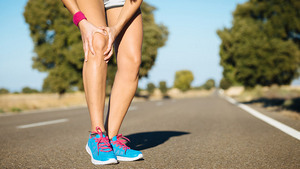
- Pain or discomfort after sleeping (or when trying to get up after sitting for a long time).
- Pain in the knees when standing for a long time.
- When climbing stairs - burning.
- Night pain or discomfort after training.
- Feeling weak and "kinking" in the lower limbs.
One of the main symptoms is pain and stitches in the knee area.
At the same time, the disease itself does not appear "suddenly": such sensations can grow over months or years, and at first they only bother with increased stress, and then the pain is also felt at rest.
It should be noted, however, that the symptoms vary depending on the degree of the disease.
Let's take a closer look at each option.
I degree
Osteoarthritis of this degree is almost asymptomatic, but there are a number of factors that are characteristic of this phase of the disease:
- feeling of tiredness in the limbs;
- Decrease in mobility that usually occurs after sleeping.
When there is pain, it is almost invisible. It is very difficult to diagnose the disease at this stage, so you can not do without an X-ray: osteoarthritis is expressed as a small bump on the surface of tissues and bones.
II degree
At this stage the symptoms are more intense. Pain can occur even with a slight load on the legs, and over time such sensations can appear with a simple movement. Symptoms only go away after a long break.
Additional symptoms such as:
- crunching when moving;
- changes in the bones in the joint;
- synovitis;
- inability to bend the leg.
III degree
A characteristic feature of this degree is severe pain that no longer depends on the load: the joints can be disturbed even at night without movement.
Mobility is also impaired - a person cannot bend their leg at the knee. Weather sensitivity can also be observed.
Diagnostics and principles of further treatment
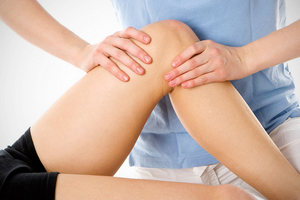
After listening to the doctor, the doctor will examine the appearance of the knee and assess its mobility. The patient is then sent for an X-ray, and several images can be taken during the treatment period, which can be used to assess the dynamics of the development of osteoarthritis. In some cases, an MRI or tomography will be prescribed.
When research is needed to correctly identify the root cause of osteoarthritis and separate it from other diseases with similar symptoms.
Treatment usually includes the following:
- drug therapy.
- Massage and manual therapy.
- Surgical intervention.
- Movement therapy and other methods of rehabilitation therapy.
The main goals of treatment are:
- pain relief;
- Restoration of the ligamentous apparatus and destruction of the cartilage;
- increases the range of motion in the joint.
Massage procedures, physical therapy, and even proper nutrition are also important. If you go to the doctor late or none of the above methods help you, an operation will be prescribed: the installation of an endoprosthesis.
Treatment of osteoarthritis - selection of methods and means
There are currently such groups of drugs that are initially prescribed for the treatment of osteoarthritis:
- NSAIDs - nonsteroidal anti-inflammatory drugs;
- chondroprotectors;
- medicinal ointments;
- compressor tools.
NSAIDs are aimed at eliminating pain and inflammation. And only after the pain syndrome has been reduced, further treatment can begin.
If the use of nonsteroidal drugs gave no result, especially if the disease only progresses, doctors usually prescribe hormonal drugs.
However, it should be noted that due to a number of side effects, such drugs are prescribed only during the illness - when fluid accumulates in the part of the joint. The solution is injected no more than once in 10 days.The only group of active substances that directly influence the cause of osteoarthritis are chondroprotectors. They are particularly effective in the early stages.
Hyaluronic acid, which is injected into the joint, is also very effective in the early stages. This procedure isn't the cheapest, but it does help to rub off the cartilaginous surface.
If osteoarthritis is detected, ointments are also prescribed - they also reduce the sensation of pain and eliminate inflammation.
How traditional medicine can help
It should be said right away that you shouldn't just use traditional medical methods - they should only be used as an adjunct to medical treatment.
Let's look at a few things that can help with knee osteoarthritis:
Dandelion flowers
You only need to eat 5 dandelion flowers a day. Be sure to rinse them off with boiling water. You can also make tinctures: take 5 dark glass bottles, fill 50% with flowers, fill the container with triple cologne to the neck. Insist for a month, then wipe your knees with the infusion.
Lapping
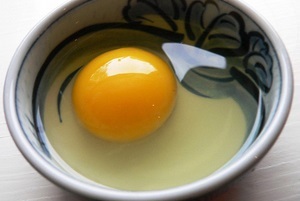
This is a compound that needs to be rubbed into the knee joint on a regular basis.
To make such a composition is very simple: take the yolk of one egg and mix it with 1 tbsp. l. Turpentine, add 1 tsp. Apple Cider Vinegar. All ingredients must be mixed and left to stand overnight.
Lubricate your knees every night and wear a woolen scarf.
In addition, it is very important to wash the applied mixture thoroughly in the morning. To relieve symptoms, you should use this method for 2-3 weeks.
Burdock
According to folk effects, you need to attach 3-4 large burdock leaves to the sore knee and wrap it with a bandage. Repeat this manipulation for at least a week to relieve pain. And to increase the effect, you need to lubricate the joints with cinquefoil oil.
Celandine juice
Soak a piece of cloth with juice and place it on the affected knee. Brush with vegetable oil after an hour. Repeat the process for a week.
Harpagophytum root
Take 2 tbsp. l. means pouring into a thermos, pour 1 liter of boiling water, leave for two hours. Take at least 3 glasses a day warm.
Selection of knee pads for osteoarthritis
In the case of osteoarthritis of the knee joint, it is often recommended to wear special knee pads that both reduce discomfort and have a therapeutic effect. If you use them for a short time you will usually see improvements like:
- the inflammatory process decreases;
- the puffiness disappears;
- pain relief;
- reduces the pressure on the joints;
- The work of the musculoskeletal system is stabilized.
It is very important to choose the right model that is effective in wearing. To do this, let's first examine what types of knee pads there are:
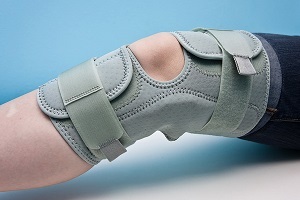
- Open.Indispensable for those who are in pain after an injury or minor pain.
- Elastic productswith stiffeners. This type of knee protector is better for those who experience pain when squatting, climbing stairs, or climbing stairs.
- Open theknee pads with adjustable tension. Such products are ideal after surgery.
- Closed type- They are used when the source of pain is unclear, that is, when they are not concentrated in a specific location. Allows the stress on the joints to be minimized.
- The magnetic appearanceof the knee protector is characterized by the presence of a special magnet that has a warming effect and improves blood circulation.
- Foldable.Is considered a universal option. Used to minimize pain after injuries and osteoarthritis.
In addition to the type, you also need to consider the material the knee pads are made of. Such elements can therefore be made from:
- animal fur.These products heat up, absorb moisture, reduce inflammation and improve blood flow to tissues.
- polyester.Knee pads made from this artificial fabric are very comfortable, reliable, but do not heat up and are quite expensive.
- cotton.Nice to wear, waterproof. True, there are also disadvantages: lack of elasticity and fragility of use.
- nylon.Knee pads made of this material are considered to be the most durable and adapt well to the body. But there is also a minus - this is an artificial material.
- neoprene.Despite the fact that it is an artificial fabric, this material is elastic and has a warming effect. There is also a downside - wearing such knee pads can cause allergies.
However, it is important not only to choose the right knee pads, but also to use them. Doctors make some important recommendations to follow:
- You are not allowed to wear them for more than three hours a day.
- The length of time it is worn depends on the degree of osteoarthritis. The doctor will give you more information about this.
- If you have an allergy, you must urgently consult a doctor who will prescribe another bandage for you.
- It is impossible for the agent to compress the joints too much.
- Wash knee pads by hand, the water temperature should not be more than +40 degrees.



























